Wildlife Gardening
June 15th, 2021 | Categories
Sarah Squire, highlighting the steps you can take to attract wildlife into your garden.
Gardening with wildlife in mind has become a really hot horticultural topic and a very welcome one at that! In the not too distant past we grew plants and if the by-product was that they attracted birds and bees so much the better. Today many of us are planning our planting schemes with wildlife in mind and schools and individuals are all doing their bit to help our feathered, furry and invertebrate friends.
There are so many steps that gardeners can take to encourage wildlife and the rewards are not just in seeing a more diverse range of species, or the recovery of delicate ecosystems, but also a better functioning and better looking garden too.
Birds
It is well known that we can encourage birds into the garden by feeding them! There are lots of different foods available to attract different species and even different formulations to give them the right balance of nutrients at the relevant time of year. Providing a source of clean water in a bird bath or large shallow dish for drinking and preening may be obvious. So is reducing the risk of predation by putting a bell on the cat’s collar and keeping the bird table off the ground and away from trees or structures that could be used as a launch pad for predators.
Apart from the beauty of the birds themselves these measures will not make your garden more attractive. However throw in some bird friendly plants and you have an ideal combination. Any of the following will give you a good looking garden and an open invitation to the birds :-
Sunflowers, Clematis, Cotoneaster, Birch, Ivy, Japanese Quince, Rowan, Hawthorn, Willow, Guelder Rose,
Exactly the same philosophy works equally well with bees and butterflies.
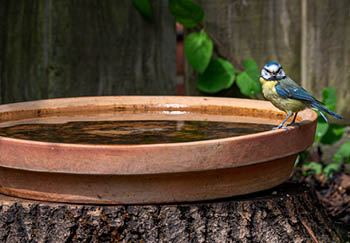
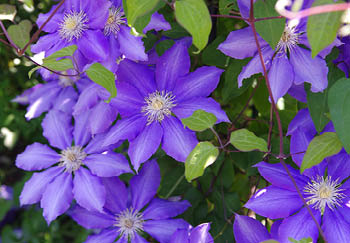
Bees
For bees think native and think local and plant in clumps of single species. Bees seem to be most attracted to blue, purple, white and yellow flowers. They find it much easier to take nectar from single flowered varieties. Herbs also make a great food source – for the birds and the kitchen. Try Mint, Marjoram, Oregano, Rosemary, Sage and Thyme.
Ornamental plants that are pleasing to bees and people include Aubretia, Lavender, Viburnum, Forget-me-nots, Foxgloves, Campanula, Dahlia, Geraniums, Cornflower, Biddleja, Lupin, Scabious and Sunflowers.
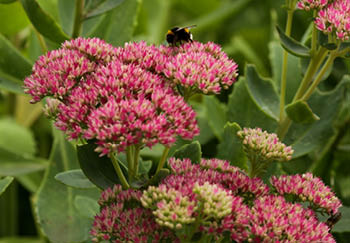
Butterflies
Butterflies like it warm so a few well-placed flat stones in sunny areas provide an inviting butterfly sun terrace.
Butterflies seem to like colourful plants in clumps. They appear to like pink, purple and yellow best. Single flowered forms provide easier access to nectar. Allowing a wilder area of the garden to develop with some wildflowers, thistles and, dare I say, nettles too will promote caterpillars.
Dogwood, Aubretia, Primroses, Crocus, Cowslip, Hebes, Heather, Pansy, Phlox, Sedum, Sweet William, Aster, Cornflower, Catmint all appeal to butterflies.
If you only have room for a few plants to attract birds, bees and butterflies then my top 5 would probably be Lavender, Buddleja, Sedum, Scabious and Aubretia,
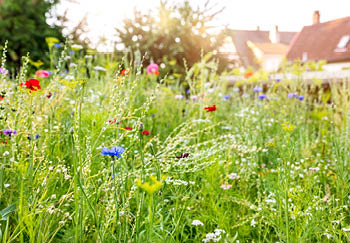
Pond Life
Perhaps the easiest way to introduce the most biodiversity in to your garden is to create a pond. It is amazing how quickly a small body of water will become home to newts, frogs, toads and dragon flies as well as a place for birds to drink and preen. Look for a spot that is not too overhung by trees and create a pond with shallow edges and a deeper centre of about 77 cm. It also opens up the wonderful world of water plants to you. Watching a dragon fly dry it’s wings on a lily pad has to be one of life’s most simple and rewarding sights. Our garden pond literally teemed with life and provided a wonderful insight into the natural world for our children as they grew up. I am so glad we resisted the temptation to fill it in when they were small and fenced it instead. It looked pretty good in the garden too, with its margins planted with bog plants and a large Rheum at the back.
Create a log pile and lots of wildlife will soon take up residence, possibly even a hedgehog. A compost heap is similarly welcoming to hoards of insects and maybe a slow worm, as well as producing a perfect home made soil conditioner.
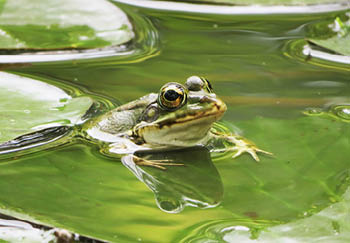

Useful Links
- Shop Online for Bird Care & Wildlife
- Plants for Wildlife (Article)
- Bees and Butterflies (Article)
- Ponds (Article)






